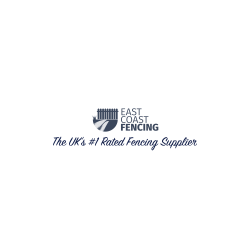The Art of Fence Installation: Tackling the Toughest Challenges

Fence installation is an essential part of home improvement and land management, providing security, privacy, and aesthetic value to properties. However, it's not just about picking the right materials and digging a few holes; installing a fence involves meticulous planning, understanding the terrain, and overcoming various obstacles. In this blog, we'll explore the art of fence installation and how to tackle its toughest challenges with grace and efficiency.
Understanding the Terrain
The first step in any fence installation project is thoroughly understanding the terrain. This involves more than just appreciating the beauty of your land; it means digging deep into the soil type, topography, and any underground utilities that might impact your fence layout.
Soil Type and Topography
Different soil types can significantly affect the stability of your fence. Sandy soils may require deeper posts or concrete support to prevent shifting, while clay soils might necessitate drainage plans to avoid water pooling around your fence posts.
Topography is another critical factor. Installing a fence on a slope or hill can introduce complications, from ensuring each panel is level to adjusting post depths for a consistent fence height. Advanced techniques like stepping or racking the fence may be necessary to achieve a seamless look that follows the natural contours of the land.
Underground Utilities
Before you even plan your layout, it's crucial to identify and mark any underground utilities. Striking a utility line not only poses a safety risk but can also lead to costly repairs and fines. In the UK, services such as the beforeUdig register can help locate underground cables and pipes, ensuring your fencing project doesn’t hit any unexpected snags.
Choosing the Right Materials
Selecting the appropriate materials is paramount for a long-lasting and visually pleasing fence. Wood, metal, vinyl, and composite materials offer different benefits and challenges:
- Wood is classic and versatile but requires regular maintenance to prevent rot and insect damage.
- Metal fences, such as wrought iron or aluminium, offer durability and security but can be susceptible to rust without proper treatment.
- Vinyl is low maintenance and resistant to weathering but may not offer the same strength as wood or metal.
- Composite materials provide a balance of durability and aesthetics but can be more expensive initially.
Balancing cost, longevity, and aesthetics is key when selecting your fence material.
Legal Considerations and Neighbour Consultation
Before installation begins, familiarise yourself with local zoning laws and regulations to ensure your fence meets all requirements. Additionally, if your fence will border a neighbour’s property, it's courteous and often necessary to consult with them. This can prevent disputes and ensure that boundary lines are respected.
Professional Installation vs DIY
While some homeowners opt for DIY fence installation to save costs, hiring professionals can streamline the process and avoid common pitfalls. Professionals bring expertise in dealing with challenging terrain, securing permits, and sourcing the best materials for your budget and climate. However, if you're set on installing the fence yourself, thorough research and preparation are essential. Understand the full scope of the project, from digging post holes to securing panels and gates.
Facing the Toughest Challenges
Even with meticulous planning, you're likely to encounter challenges during your fence installation project. Here are a few tips for overcoming common obstacles:
- Dealing with Rocky Soil: If you hit rock while digging post holes, you may need to use a rock bar or a jackhammer to break through. In extreme cases, repositioning your fence line slightly might be easier than removing large boulders.
- Ensuring Privacy on Slopes: If your main goal is privacy, installing a stepped or racked fence can maintain seclusion without sacrificing design on uneven terrain.
- Managing Long-Term Maintenance: Opt for treated or naturally durable materials to minimize upkeep, and consider a slight incline on horizontal surfaces to prevent water accumulation.
Conclusion
Fence installation is both an art and a science, requiring a blend of careful planning, understanding the physical landscape, and navigating legal requirements. While the task may seem daunting, the right approach and tools can transform challenges into triumphs, leaving you with a fence that not only looks great but also stands the test of time. Whether you decide to take on the project yourself or hire professionals, remember that a successful fence installation is a result of patience, precision, and a deep respect for the land it graces.














Leave a Comment